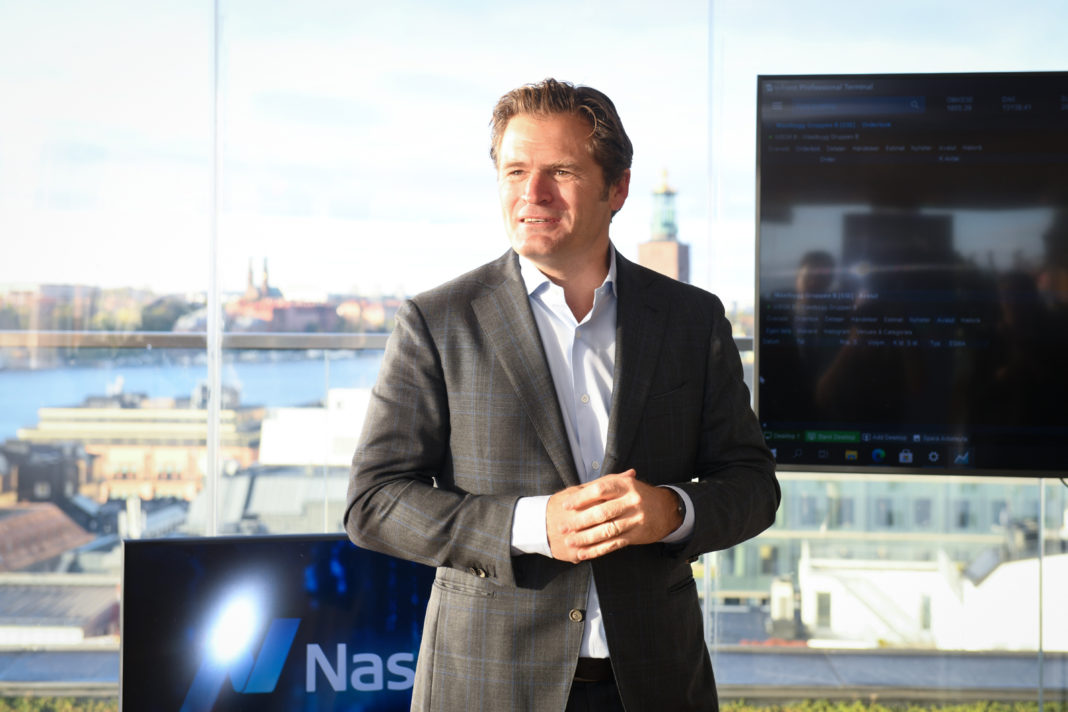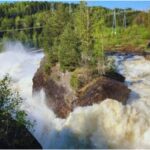Bildnachweis: Nasdaq Stockholm.
In December, we talked to Adam Kostyál, Senior Vice President and Head of European Listings at the Nasdaq Stockholm, about his predictions for the upcoming IPO-year in the Nordics – now we are eight months in 2021: time for a catch-up. Let us see, if Kostyál was right and what other news there are.
GoingPublic: Back in Dezember, you forecasted a very strong IPO-year 2021 on the capital markets in general and the Nasdaq Stockholm particularly. Could 2021 so far meet your expectations?
Kostyál: It absolutely could. 2021 so far is beyond expectations. We have been able to list a substantial number of companies – 112 in total and 86 IPOs. We are on the way to have a record year in terms of the number of listings, which is fantastic.
Here you find our previous interview.
Was it mostly IPOs from Nordic companies?
We continue to see a predominance of Nordic companies, but also a pickup of non-Nordic interest – companies from the UK or Germany. Our ambition is to stay Nordic and still we be accessible to non-Nordic companies. That is what we are seeing develop.
Do you think, the second half of the year can keep the pace?
It is difficult to forecast anything, but it looks like the markets will remain very active. There is a strong commitment and interest from many companies. I predict, we will have a very high level of activity also in the second half of 2021.
In June, you celebrated the first 100 companies, that switched from First North Growth Market to Nordic Main Markets. First: Congrats. Second: Could you explain, which requirements the companies must meet to switch?
The First North is one of the strong points of our market: We are able, to create an active platform on the early stage for small- and mid-sized but also larger companies.
As the companies grow – business-wise and commercially, but also from a governance point of view – they mature into the public market, become more familiar with its requirements, and develop all the different conditions needed to move to the Main Market.
There are some key factors: We put an emphasis on internal control, the application of the governance code and IRFS, which is not a requirement of First North. These three areas distinguish the two markets.
What does the milestone of 100 switched companies mean for the position of the Nasdaq Stockholm?
It is fantastic. If there was no strong growth market, many of these companies would never have listed. They would have looked for alternatives to support their growth and maybe have sold the company or remained private. If these companies come to the First North instead and grow into the Main Market, there is more access to participate from growth.
There is more news: With the Nasdaq Green Designation you established an “award” for certain companies. Which requirements must be met to be part of the Nasdaq Green Designation?
We launched the Green Designation based on the developments in the market and the increased demand from investors. Stronger ESG-requirements are being put in place from investors and the whole society. There is no way for companies to avoid the environmental shift.
What is key here: We are not rating companies. We are just defining weather companies are green or not according to certain standards we are setting. We felt, it was important that Nasdaq Stockholm plays a role in this.
Which standards did you set up?
Nasdaq Green Equity Designation is attainable for companies that have more than 50 percent of the company’s turnover deriving from activities considered green. Turnover derived from fossil fuel activities must be less than 5 percent. In addition, more than 50 percent of the company’s investments must be allocated to activities considered green.
We give companies kind of a green stamp and help them tell their green story in a more defined way.
How is the response to the Nasdaq Green Designation so far?
The response of the market has been quite good. There are several responses: One is from the advisors – for them it becomes clear which standards the companies need to work towards. Two is from the investors. It is easier for them to point out, which companies they should be investing in. Third there are the companies, which can tell their story in a clear way by qualifying as a green designation. We are at the very start – it will be interesting to see, how this develops over the fall.
Are companies already meeting the higher standards in ESG?
In the Nordics, the companies are in quite a good position versus many other markets. ESG is not a new demand, it has been there for a long time. In terms of companies which understood that this is critical for their business but also to attract investors, the Nordics are further ahead.
Adam, thanks for the good interview.





